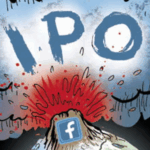 “The Sell Sider” is a column written by the sell side of the digital media community.
“The Sell Sider” is a column written by the sell side of the digital media community.
Today’s column is written by James Curran, CEO and founder at Staq.
Publishers, including Refinery29 and BuzzFeed, represent hot digital content brands that have recently decided to opt out of the real-time bidding (RTB) ecosystem. Some, like BuzzFeed, don’t even sell traditional display advertising, choosing instead to build a business on native content, video and other more engaging options. Yet many other publishers have taken the opposite approach.
If you envision digital advertising as a big pyramid, brands, which have the money, sit at the top. As the money gets handed down to agencies, demand-side platforms, exchanges and supply-side platforms, the pyramid widens, with publishers at the bottom.
With money trickling down from so many different sources, many publishers have decided to take the “more is more” approach, working with 10, 15 or as many as 40 different programmatic revenue sources to capture as many ad dollars as possible.
No matter what “programmatic” means in the dictionary, there is little efficiency gained for publishers that manage their business this way. With a few new approaches to RTB, publishers can gain the promised efficiencies that they expected.
Beware The Value Of ‘Convenient’ RTB Solutions
Google AdX is a perfect example of technology that seems like a convenient new option for publishers, but can actually diminish revenue. Due to the near-ubiquity of Google’s publisher-side ad server, DFP, many publishers have embraced AdX’s automatic “pre-bid” feature, which allows programmatic advertisers to submit a bid before a directly sold ad is placed, sort of like header bidding – putting RTB ad tags in the page header to allow bids before the ad server places a direct ad – but easier.
The real winner in this scenario, however, is Google. While Google makes a commission on every ad placed, publishers lose a potential opportunity to optimize the Google bid against other bids from other partners.
Some publishers have started to add other RTB sources to the header but it is a cumbersome solution to install and significantly multiplies the workload if additional placements or properties are added in the future. Page load times increase and data is exposed.
Finally, if anything breaks, the content on the actual website won’t load at all. The fact that publishers are going through this and risk not showing content to their own consumers in order to earn more money on programmatic shows the drastic measures they must take to capture these “programmatic” dollars.
If nothing else, it is best for publishers to ensure that they regularly review the CPMs they are getting from Google to determine if it is worth the convenience to avoid all of this.
Factor In Ongoing Maintenance
As they accommodate as many different revenue sources as their time allows, whether it is setting up a few header bidder solutions and a waterfall for the rest, the real problem is that the publisher needs to constantly be watching the reporting from all of these buyers in the chain to monitor discrepancies and understand how much they can bill for each, even the header bidders. In other words, publishers are not remotely programmatic.
What usually happens as a result is that revenue sources rarely are reviewed or changed, and a hierarchy of partners stays in place across the publishers entire site. With more work than anyone can manage, publishers risk creating a more rigid revenue system that may be less profitable. This is no way to maximize revenue.
Leapfrog To Programmatic Direct
Much of the growth in programmatic in the coming years won’t be from RTB, but from programmatic direct, eMarketer recently reported. Publishers benefit from programmatic direct because they are no longer at the base of the advertising pyramid, leaking data and revenue to the ecosystem. Instead, they are a peer of the brand. The ad tech works not on a volume pricing model, but as a transparent and objective technology partner enabling transactions between brands and publishers.
While some companies, such as BuzzFeed or Hulu, are making a name for themselves as early advocates of native or video advertising, not enough publishers have been aggressive in pushing their high-end offerings over programmatic direct channels.
Condé Nast is an example of a publisher that has openly pushed for more programmatic direct, for good reason: It has exclusive content and great data. With programmatic direct, publishers can automate a lot of the manual work, but still maintain control over data and pricing.
Control: The Name Of The Game
The most important rule of thumb for publishers as they navigate programmatic is to maintain as much control as possible.
So much of the bad press RTB has gotten, from fraud to viewability to low CPMs, is from publishers ceding control to brands, agencies and ad tech players in the ecosystem that ask for things that are terrible for publishers in the long run.
Publishers must maintain control over their ability to optimize their inventory, secure their data and set the right prices. They can only do that if they take a leaner and more analytical approach to programmatic.
Follow James Curran (@james_curran), Staq (@STAQ) and AdExchanger (@adexchanger) on Twitter.












